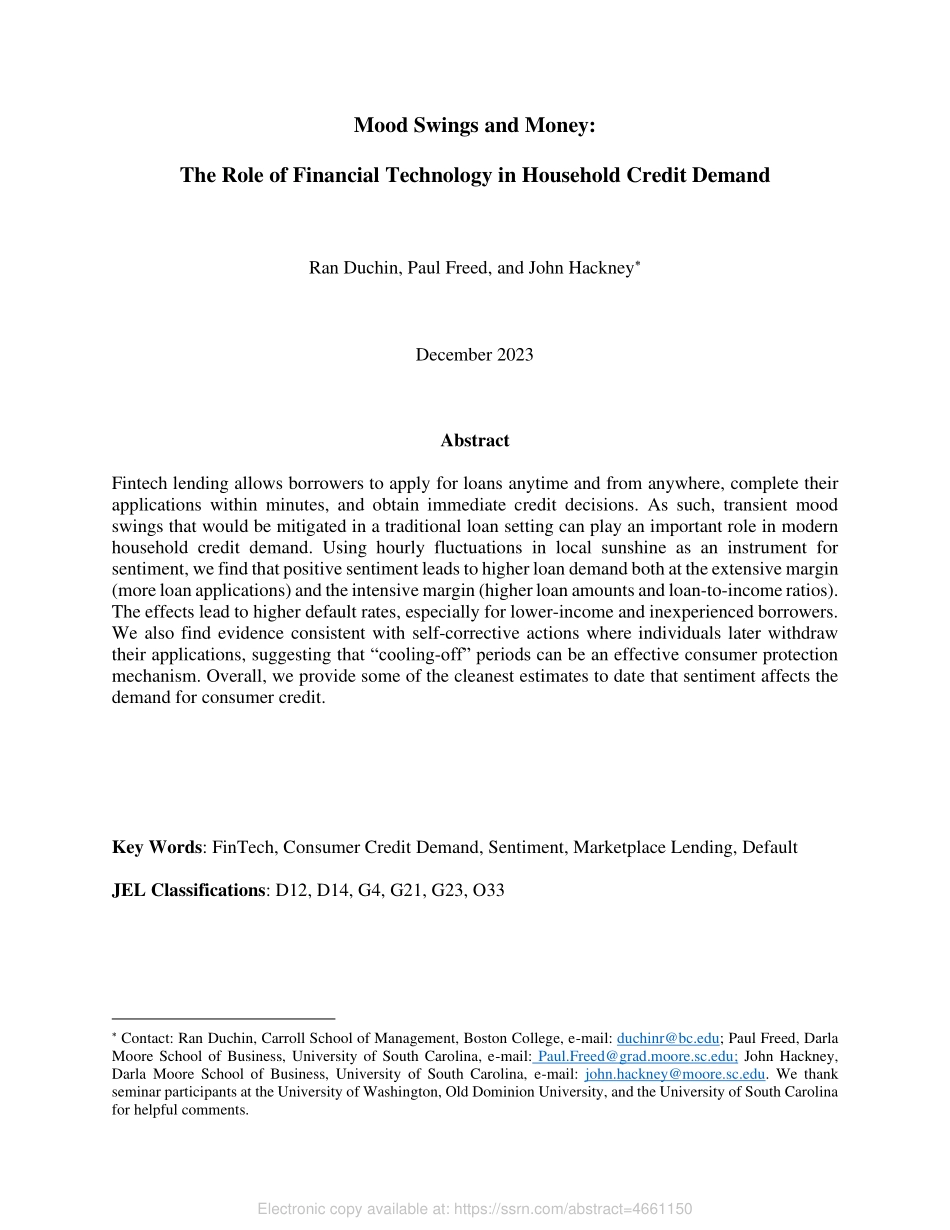Mood Swings and Money: The Role of Financial Technology in Household Credit Demand Ran Duchin, Paul Freed, and John Hackney December 2023 Abstract Fintech lending allows borrowers to apply for loans anytime and from anywhere, complete their applications within minutes, and obtain immediate credit decisions. As such, transient mood swings that would be mitigated in a traditional loan setting can play an important role in modern household credit demand. Using hourly fluctuations in local sunshine as an instrument for sentiment, we find that positive sentiment leads to higher loan demand both at the extensive margin (more loan applications) and the intensive margin (higher loan amounts and loan-to-income ratios). The effects lead to higher default rates, especially for lower-income and inexperienced borrowers. We also find evidence consistent with self-corrective actions where individuals later withdraw their applications, suggesting that “cooling-off” periods can be an effective consumer protection mechanism. Overall, we provide some of the cleanest estimates to date that sentiment affects the demand for consumer credit. Key Words: FinTech, Consumer Credit Demand, Sentiment, Marketplace Lending, Default JEL Classifications: D12, D14, G4, G21, G23, O33 Contact: Ran Duchin, Carroll School of Management, Boston College, e-mail: duchinr@bc.edu; Paul Freed, Darla Moore School of Business, University of South Carolina, e-mail: Paul.Freed@grad.moore.sc.edu; John Hackney, Darla Moore School of Business, University of South Carolina, e-mail: john.hackney@moore.sc.edu. We thank seminar participants at the University of Washington, Old Dominion University, and the University of South Carolina for helpful comments. Electronic copy available at: https://ssrn.com/abstract=46611501 1. Introduction The advent of financial technology has fundamentally changed the landscape of households’ financial decision-making. Borrowers on online marketplace platforms can apply for loans from the comfort of their homes, day or night, complete their loan applications within minutes using their smartphone or computer, and never speak to a banker or a loan officer. Such developments, in turn, can have a material effect on overall financial decision-making. At the extensive margin, lower transaction costs can increase the consumption of credit. The unsecured consumer loan market has grown dramatically in the last decade, from $57.7 billion in 2009 to $156 billion in 2019, with marketplace lenders responsible for roughly 40% of the market.1 At the intensive margin, they can affect the quality of credit decisions and subject them to influences that more traditional settings would mitigate. In this paper, we use micro-level data from an online marketplace lending platform to study the role of sentiment and financial technology in households’ credit demand. The analyses utilize 1.4 million times...


